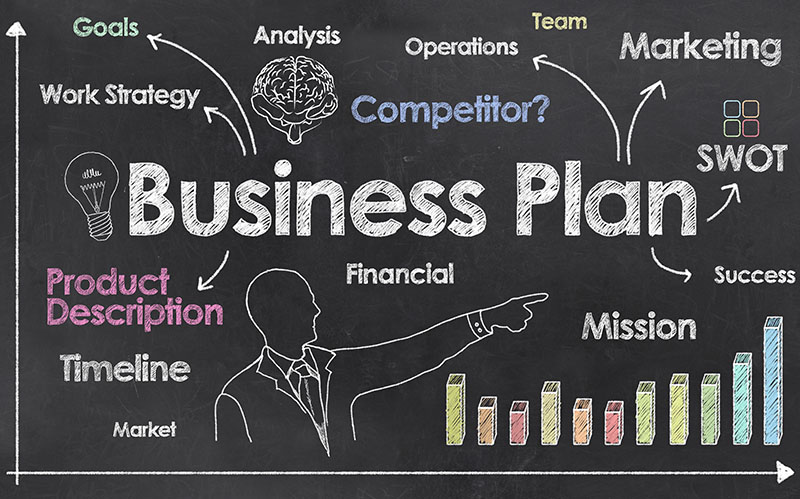When creating your business plan, take time to think about important elements of your company. Doing so not only allows you to reflect on your objectives and opportunities, it also helps financers and investors understand your vision. Articulating a clear business plan will help you obtain crucial support. Here is how to create a business plan and leverage it for success.
Business Planning Formats:
Choose between two common formats:
- Traditional: Traditional business plans are comprehensive. If you are looking for partners or investors, include significant detail, which is expected by those with whom you wish to partner.
- Lean Startup: Lean startup business plans focus on key details, summarizing important information. Traditional business plans can be longer than 10 pages; these plans are often a page, an overview providing a high-level focus.
If you are more detail-oriented and hoping to attract investors or lenders, the traditional business plan is best for you.


9 Sections of a Traditional Business Plan
A business plan should include these nine sections:
Executive Summary: Explains who you are, your mission statement, your company offering, the number of people on your team, why you expect to succeed, your location, etc. If you are using your business plan to attract financing or investors, cover financial information and growth plan overviews.
Company Description: Provides additional detail about your company, focusing on the problems your products and services solve. List characteristics of your ideal customer profile, and if you have specific consumers or businesses you plan to approach, list them as well. Outline why you have a competitive advantage, such as the qualifications of team members or your unique value proposition. Emphasize your strengths.
Market Analysis: Shares the research you have conducted, which helps you identify opportunities by studying what other businesses are doing. Talk about trends, how you compare to successful competitors, and how you improve upon their offerings. This section helps you spot issues with your plan so you can fix them.
Organization and Management: Provides the basics of the company, such as the structure, if you are incorporated, partnered or a sole proprietor, and an overview of individual team members and their skills.
Service or Product line: Describes your products and services, and the problems they solve. Do you have any intellectual property that requires copyright or patent filings? If applicable, in this section you outline plans for research and development.
Marketing and Sales: Explains your strategy to find customers, your sales process, and your customer retention plan. Outlines your marketing and sales strategies. Plan to refer back to this section so you can use it when making financial projections.
Funding Request: Only required if you plan to use your business plan to request funding. Clearly outline how much funding you need and how that money will be used. Are you asking for debt or equity? What are your ideal terms? How will you cover your debt?
Financial Projections: Supplements your funding request and offers an overview of financial projections. New businesses should consider monthly projections. This section should also include:
- Forecasted income statements
- Balance sheets
- Cash flow statements
- Capital expenditure budgets
Appendix: Includes additional supporting documents and/or documents requested by potential investors or financing companies (e.g., resumes, product sales sheets, references, proof of licenses and permits, patents).


9 Sections of a Lean Startup Plan
As the name implies, this format is lean and simple. The following sections should be included when you write your business plan using the lean startup format:
Key Partnerships: Strategic partners (e.g., suppliers).
Key Activities: An overview of how you’ll gain a competitive advantage.
Key Resources: Assets you can leverage to create customer value.
Value Proposition: What you offer that the competition doesn’t.
Customer Relationships: Your customer experience overview and interactions.
Customer Segments: Specific target markets.
Channels: Lists how you will communicate with customers.
Cost Structure: Explains your focus, such as reducing cost, maximizing value, and how you will achieve it.
Revenue Streams: Describes how you plan to make money (e.g., advertising space, memberships, direct sales).
Use your business plan to show potential investors, partners, and financial companies where you plan to go. Through their financial support, you gain the capital needed for expansion and growth, allowing you to meet your goals.

